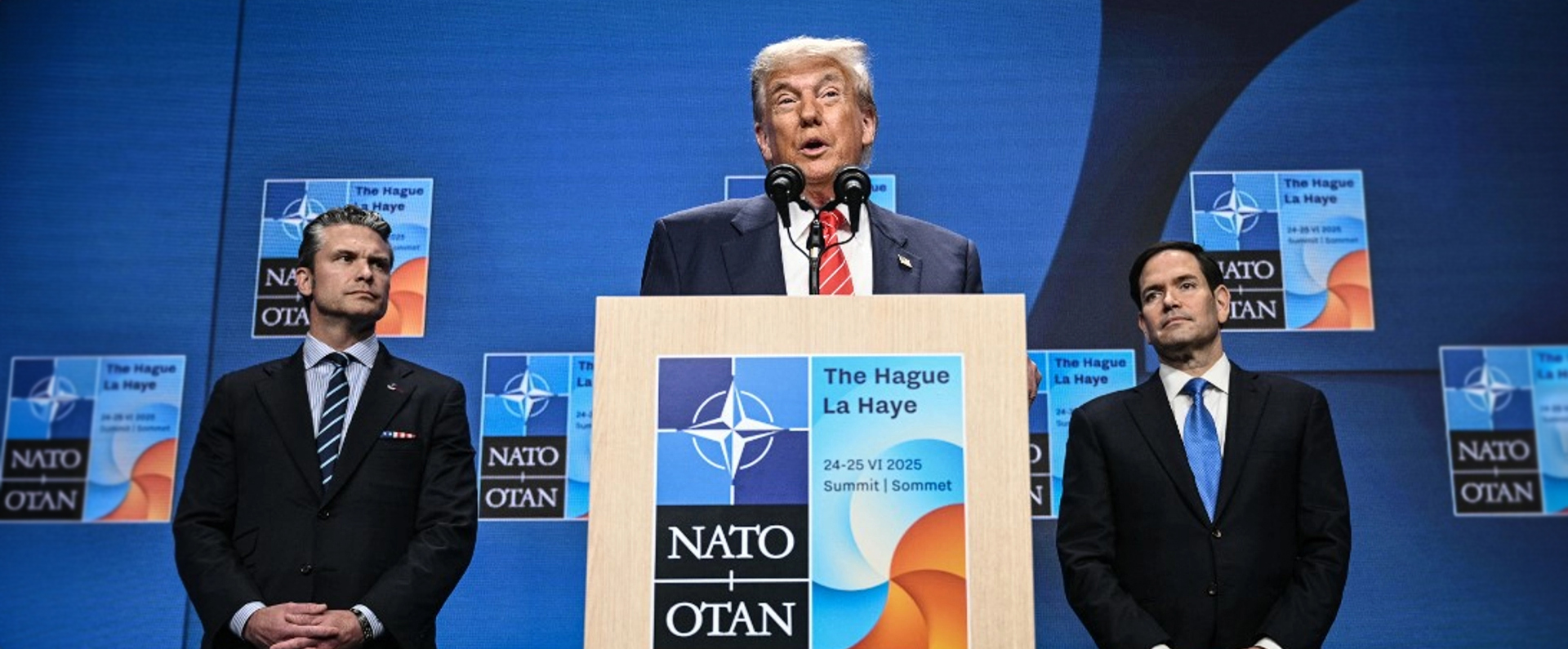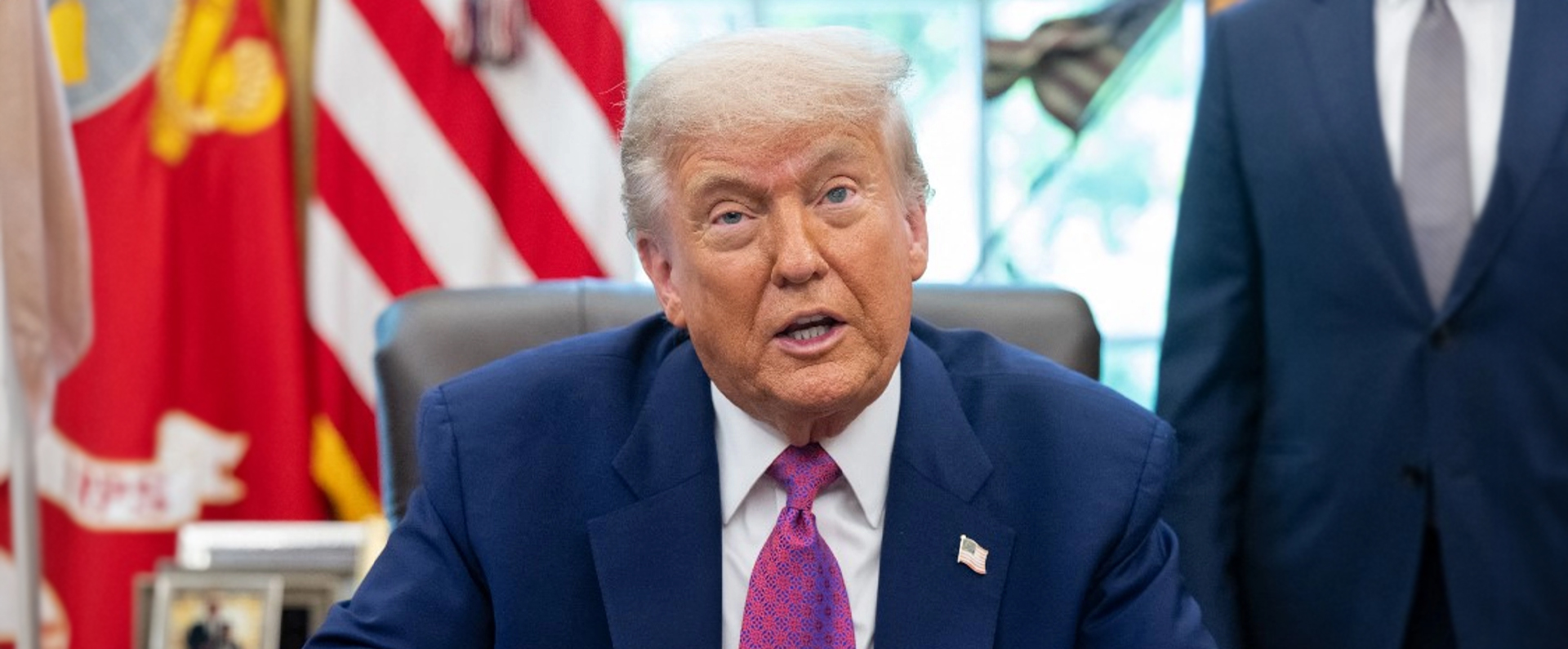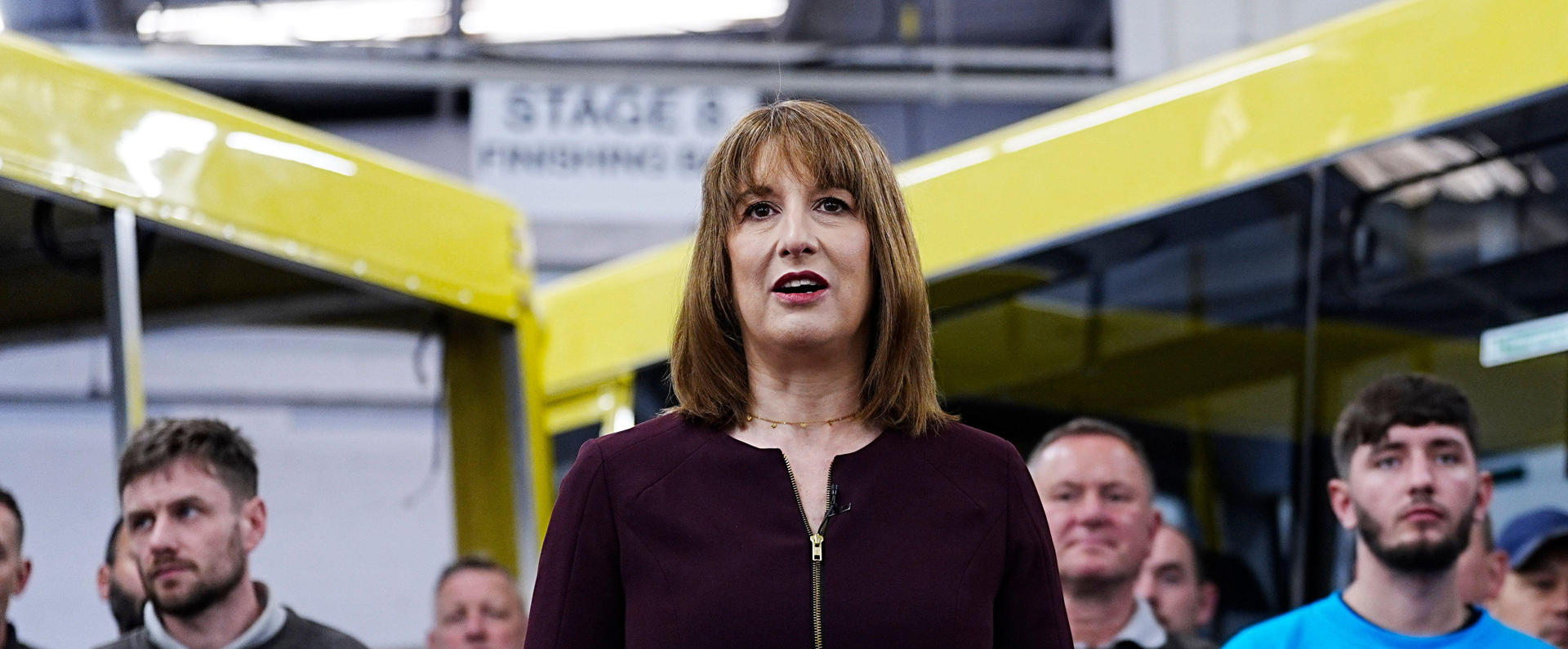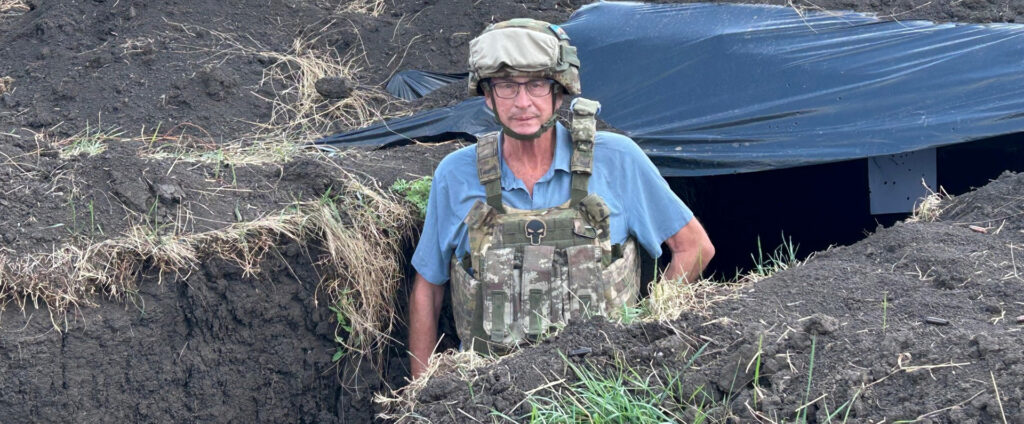
Published on ConservativeHome.com on 11 September 2023.
His words were chosen carefully and without a hint of bravado. Despite his rippling muscles, multiple tattoos, and macho appearance, he made no pretence at hiding how weary he was from more than 18 months of death and mayhem in his homeland.
“Because there has been so much death, we can never talk now of a ‘victory’. When the war is over, there can be no celebrations. We have all lost so much that all we will do is go home and lay on our beds,” said the junior lieutenant, aged 26, his eyes full of sadness and despair.
For security reasons, the soldier, serving in Ukraine’s Kraken Regiment, asked to be identified only as “Scar”, his nickname from the zig-zag mark cut deep into his forehead, incidentally from a childhood dog bite rather than an enemy bullet.
Scar was one of three Kraken soldiers who I met in Kharkiv, Ukraine’s second city, while heading for the nearby frontline. Kraken has an estimated 1,800 volunteer fighters, mainly with military experience, who since the war began have done a variety of work from training civilians in weapon use and carrying out vital reconnaissance work to fighting on the frontline.
Scar’s honest words and his pledge to defend his homeland for his wife and two children reminded me of a quote from the writer and philosopher, GK Chesterton: “The true soldier fights not because he hates what is in front of him, but because he loves what is behind him.”
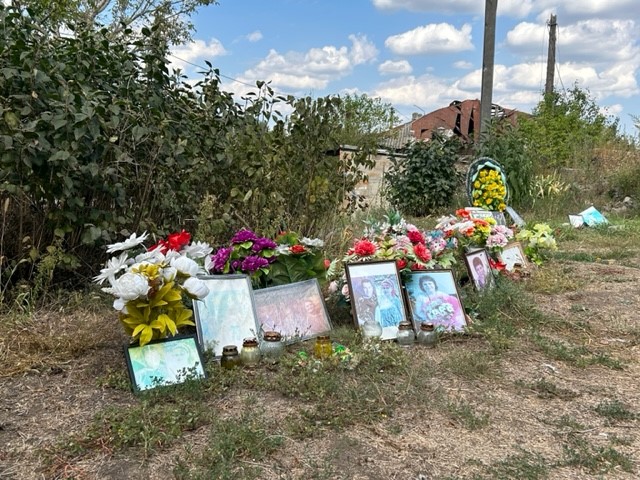
Flowers, photographs and messages in the city of Izium to pay respects to the 50 victims who died just yards away in an apartment bombing.
“Because there has been so much death, we can never talk now of a ‘victory’. When the war is over, there can be no celebrations. We have all lost so much that all we will do is go home and lay on our beds,”
I spent last week in Ukraine, for much of it in or close to the frontline cities of Bakhmut, Kramatorsk and Izium. It was my fourth visit to the country since Russia tried, but failed, to launch a full-scale invasion in February last year. The strength of my commitment to Ukraine grows with each visit.
As a trusted supporter of Ukraine’s war effort, I am now in the privileged position of being given access to security-sensitive areas, and over the past week I was provided with a fascinating insight into the nature of modern warfare.
No part of my visit was more revealing that my afternoon spent in a command bunker close to the frontline. On six large electronic screens at the far end of the room, there were clear images of a battle raging on a warm, sunny afternoon some 15 miles away.
At risk were the lives of 60 men from Ukraine’s Tsunami Assault Regiment as they fought their Russian enemy in the frontline village of Klishchiivka, near Bakhmut. At times the two sides, crawling through the rubble of shattered buildings, were firing at each other from only 50 metres apart.
At first glance it resembled scenes from both world wars but there was one huge difference: dozens of drones were streaming live and near perfect images of the battlefield and surrounding area. This enabled Ukrainian commanders to plot tactics and troop movements from their underground command centre.
While studying the six screens. Lieutenant-Colonel Olexandr Gostyschev, the commander of the regiment, was surrounded at his desk by more than half a dozen experts advising on military planning, intelligence, air defence, drones, and signals.
At one point, the room went quiet as an image, provided by a single drone flying at exactly 114 metres, appeared of a Ukrainian mortar attack on a building in Klishchiivka housing Russian soldiers. The subsequent explosion indicated a direct hit and the likelihood was that everyone inside was either dead or injured.
Even during the most intense fighting, Lt-Col Gostyschev remained calm and authoritative, delivering orders over a secure internet service or an equally safe mobile phone service.
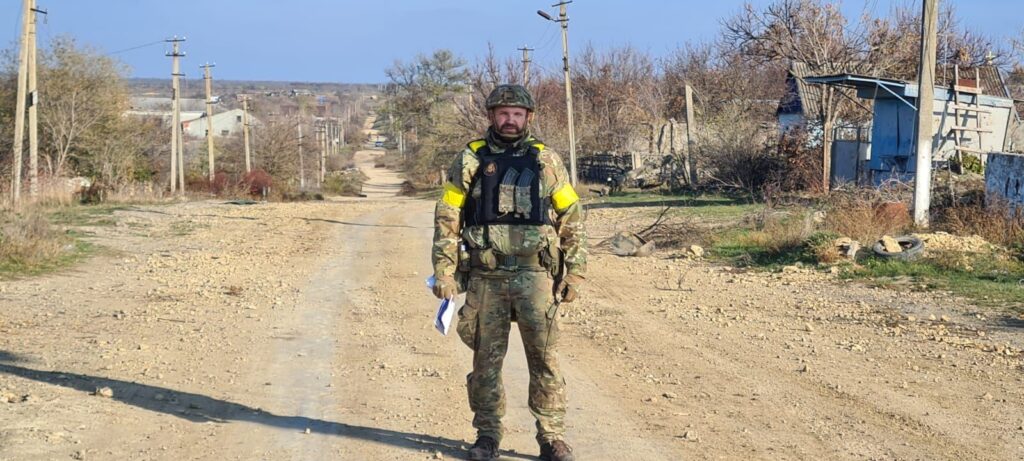
Lt-Col Olexandr Gostyschev, commander of the Tsunami Assault Regiment.
When there was a momentary lull in the fighting, I asked the bearded, broad-shouldered 40-year-old officer if he felt under pressure making life-and-death decisions affecting his 2,000-strong regiment, made up of volunteers, mainly former police officers from the Odessa region in southern Ukraine.
“At times, it is tough, but it is my duty to take responsibility. I do all I can to keep my men alive,” he replied, speaking through an interpreter.
Over the last three months of fighting in and around the city of Bakhmut, his regiment has taken “heavy casualties”. Ukraine does not disclose its total losses in human terms, but the nation is thought to have had some 70,000 soldiers killed and up to 140,000 wounded during the past 18 months. Russia’s casualties are almost certainly twice those numbers.
However, since the counter-offensive against the Russians began three months ago, the Tsunami Assault Regiment has often been advancing 75 metres every day.
Much of this progress, at times painfully slow and at a terrible human toll, has come from technological advances in the world’s first drone war. Today both sides are using reconnaissance and attack drones on an unprecedented scale.
According to senior military sources, Ukraine alone is using 2,000 drones every day along and behind the 700-mile frontline. Furthermore, Ukraine appears to be using them more effectively than their Russian enemy. It is possible for a single drone costing only a few hundred pounds to wipe out military hardware on the ground costing millions of pounds.
Just over a week ago Ukraine finally made significant progress punching through Russia’s first defensive line in the Zaporizhzhia region and so the war is now at a crucial stage.
As the author of seven books on bravery and having amassed the world’s largest collection of Victoria Crosses (VCs), I am always fascinated by tales of great individual courage.
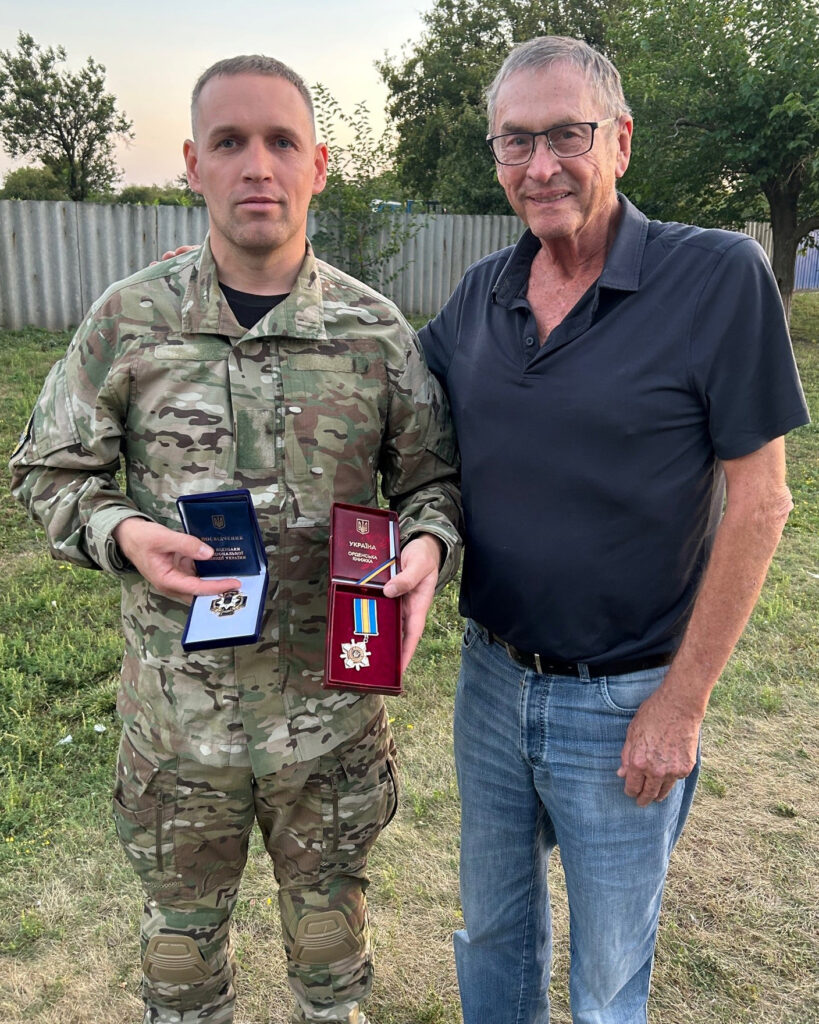
Lord Ashcroft with Ukrainian war hero, Lt Vitaly Nekrasov, who was decorated for bravery last week by his president. One photo of the same soldier on his own.
So one day last week, as the battle continued for the village of Klishchiivka – once home to 500 residents – I left the command bunker in order to travel to a secret location to interview a young officer, who only the day before had been presented with the Order of Merit gallantry medal from Volodymyr Zelensky.
I learnt how at around 8am on September 1, Lieutenant Vitaly Nekrasov, 37, and five other men from his Tsunami platoon attacked an enemy position believing it was held by only three Russians.
However, their intelligence proved incorrect and, as the soldiers advanced, they were ambushed and fired upon from four different enemy positions. Some of the rifle fire came from less than ten metres away.
As the two sides fought at close quarters for some 15 minutes, one of his soldiers was killed and four others injured. Eventually, the soldiers, short of ammunition, were forced to retreat as a bigger Russian force advanced to finish them off.
However, unbeknown to the Russians, five other soldiers from the platoon were in support and they opened fire on the advancing enemy and even took two Russian troops as prisoners as they leapt from a foxhole.
By this point, enemy artillery fire was exploding from behind Lt Nekrasov, a platoon commander, and his men but as they tried to retreat an exploding shell set fire to their dead comrade.
“The burning body created a lot of smoke and helped with our retreat. His death saved our lives because after an hour and a half of fighting we pulled out without any further casualties,” he told me. The officer was refused permission to retrieve his comrade’s remains because it would have endangered more lives.
For his gallantry in saving most of his platoon, Lieutenant Nekrasov was awarded both the Order of Merit, similar to our Military Cross (MC), and also the highest-ranking bravery medal for a police officer. Like many of his comrades, he served in the police before joining the army last year.
As darkness fell, I returned to the command bunker to discover an air of sadness had descended on proceedings. In fighting later that afternoon and while rotating their soldiers, a Russian “kamikaze drone” has struck a soft-topped vehicle, killing one Tsunami serviceman and injuring three more, one of whom had suffered a major injury to the lower part of his body.
At about the same time, news had come through of an atrocity in the small city close to where I was staying that night: a missile attack on Kostyantynivka killed at least 17 people, including a child, and injured dozens more. The blast took place on a busy market street in the middle of the day.
“It is important that our warriors are advancing and that we have the initiative on our side. We recognise this fact. All processes are becoming more complicated and slower: from sanctions to the provision of weapons.”
President Zelensky
Later military sources showed me a short, but harrowing, video, captured by a soldier moments after the blast. It showed dead and dying civilians in front of burning buildings, with the crackling of live electricity wires drowning human screams. For the soldiers, it was just another day in this brutal war. For me, it was deeply upsetting that Russia could seemingly target civilians in such a callous way.
Once again, I was reminded of a poignant quote, this time from the late American historian, Howard Zinn: “There is no flag large enough to cover the shame of killing innocent people.”
I stood later than night in the darkness outside our “safe house” near Kostyantynivka, as the sound of crickets mixed with the noise of out-going Ukrainian artillery fire on the frontline.
Later, enjoying a late-night supper with three experienced Tsunami soldiers inside the house, which had all its windows blacked out with plastic bags, the dull thud of incoming artillery fire was so much louder and our two-storey building shuddered. “Don’t worry. It is in the hands of the gods [who lives and dies],” joked Sergiy Tetyukhin, 49, who accompanied me for two days around frontline positions.
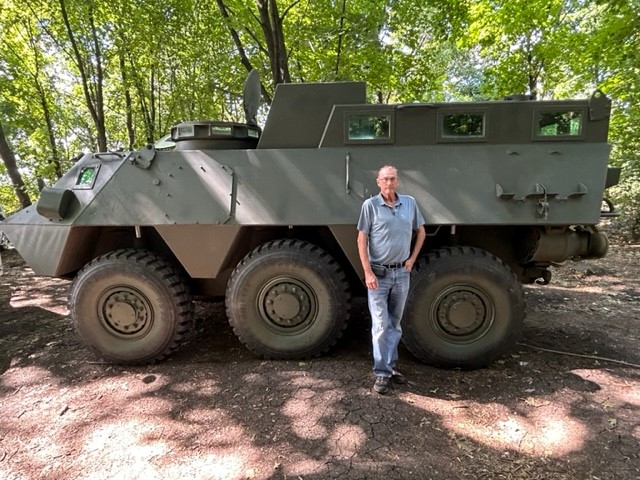
Lord Ashcroft deep in a secret wooded location in eastern Ukraine with an armoured evacuation vehicle used to take wounded soldiers from the battlefield.
The next morning we all awoke to more sad news: three more Tsunami soldiers had been seriously wounded in fighting overnight. Yet even in war, no-one should ever doubt that Ukraine is a beautiful country. I was driven an hour along bumpy roads and besides picturesque lakes and endless fields of sunflowers to a secret location off a dirt lane.
There I watched as 50 Tsunami soldiers, new and experienced alike, honed their shooting and assault skills at a training camp. Four-man assault teams were shown the best way to clear an enemy trench using first hand-grenades and then rifle fire. Nearby other men were using a rifle range for close-combat target practice.
In the city of Kramatorsk, more than 20 miles from the frontline, I met Commander Yurri Fedorenko, 32, a decorated soldier from 92 Brigade.
Although grateful for the West’s help, he made an impassioned plea for key military hardware from the West to be supplied quicker than at present. “By the time the equipment arrives months later, the Russians have already thought through how to deal with it,” he said. Yet he also told me he felt “energised” that the war was starting to turn in Ukraine’s favour.
My trip finished when I attended the two-day annual meeting of YES (Yalta European Strategy) in Kyiv to debate Ukraine’s future – one that I hope will take place when all Russian soldiers are expelled from its borders. President Zelensky told delegates:
“It is important that our warriors are advancing and that we have the initiative on our side. We recognise this fact. All processes are becoming more complicated and slower: from sanctions to the provision of weapons.”
Having spent more time in Ukraine, I can report that the determination of the nation to repel Russians to beyond their borders, including Crimea and other land annexed in and after 2014, is stronger than ever. Ideally, its people dream, perhaps unrealistically, of Russia as a state falling apart.
One thing is certain: Ukraine needs its support from the West more than ever in order to achieve a final victory. Ukraine’s allies, including the US, must not waiver.
Not only does the West, including Britain, owe it to the courageous people of Ukraine to continue, even to increase, its support in the shape of aid, weapons, intelligence and training, but for Ukraine to win the war represents the best chance of toppling Vladimir Putin and the threat he poses to all Western democracies. Bob Seely, a former British soldier and now a Conservative MP who chairs the All Party Parliamentary Group on Ukraine, said:
“Ukraine is paying a high price for this war. The quicker we all help to defeat Russia, the fewer men and women will die. The safer we will all be.”
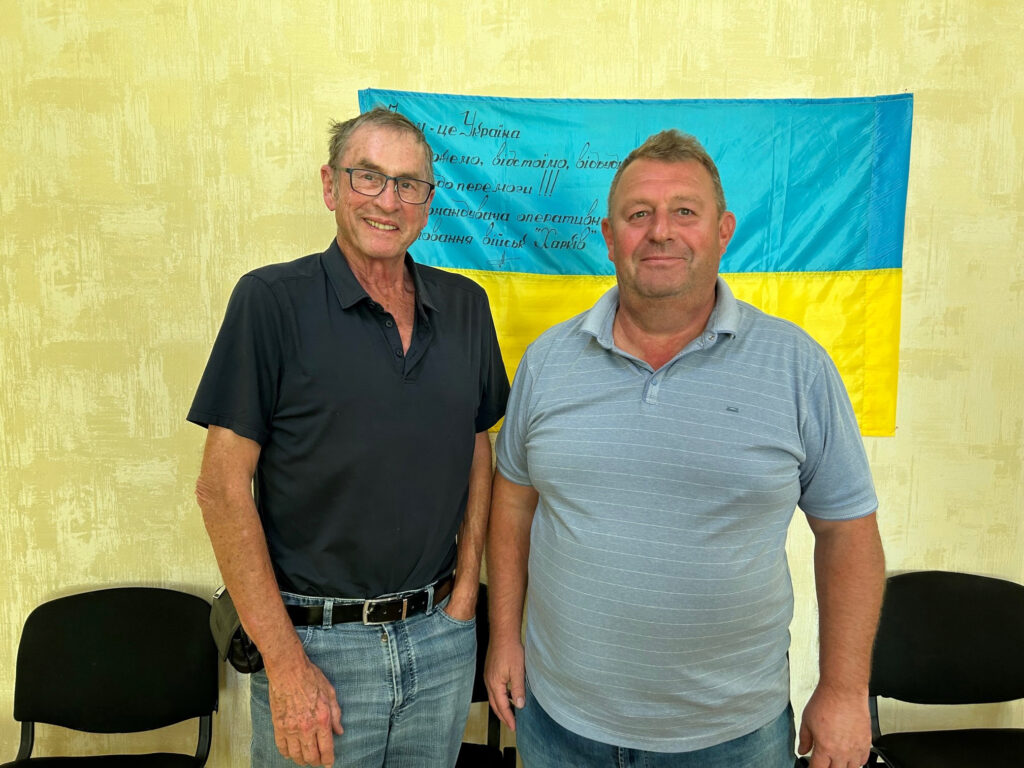
Lord Ashcroft with the Mayor of Izium, Valerii Marchenko, at his office in the largely destroyed city.
Few cities are more in need of help than Izium as Valerii Marchenko, its mayor, told me when I met him at his first-floor office last week. The city’s population of 50,000 fell to just 15,000 during the brutal Russian occupation that lasted from mid-March to mid-September last year. Marchenko, aged 50 and married with two children, said:
“Now we have a very bad economic situation in the city. Most of our small businesses have left and our farmers cannot harvest their crops because their fields are full of butterfly [largely hidden] mines. We have to concentrate on providing electricity, water and winter heating for those who are here.”
Much of the city, including its main bridge over the Donets river, have been destroyed. At least 1,000 civilians were killed in the lengthy assault on the city and during targeted murders afterwards.
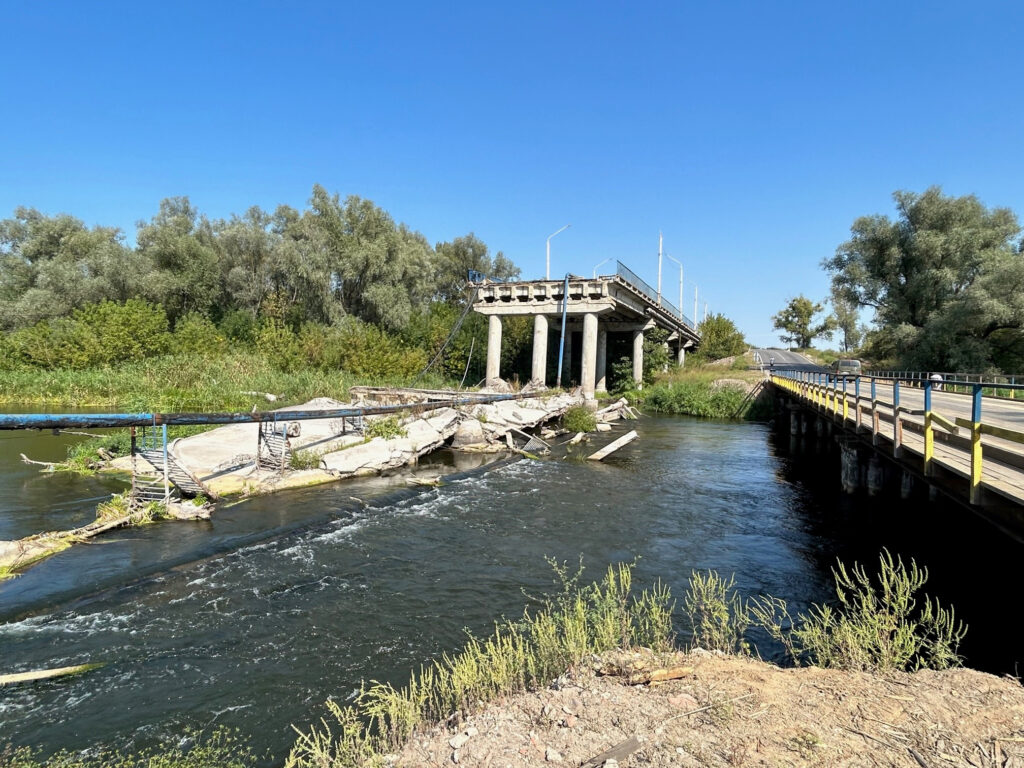
What remains of the main bridge leading to the city of Izium and a temporary bridge has been erected nearby.
During my visit, I went to an apartment block that was split in two by a suspect 1,000lb bomb. Some 50 people aged from two to 84 were killed, many buried alive in the basement in which they were sheltering. I felt deeply saddened as I stared at the huge crater that the bomb had created.
Furthermore, the Mayor told me that 30 children, mostly of primary school age, were removed from the city during the occupation and their parents still do not know their whereabouts.
However, there are already many aid workers in Ukraine, including several Britons, who are planning to help completely rebuild the war-torn country once the fighting stops.
Toby Illingworth came to eastern Poland in March last year in order to help refugees from the war. Amid the chaos, he decided to give up his job as the executive director of a financial services think tank in London to help set up a “Operation Safe Drop” for the Mad Foundation, a British charity.
“Our biggest concern is that international support for Ukraine wanes over time,”
Toby Illingworth
Over time he moved into Ukraine, initially to help refugees but more recently to organise the delivery of aid supplies – including food, water, medical supplies and protective clothing – to the areas worst hit by the war, notably the Kherson, Zaporizhzhia, Donetsk, and Dnipro regions.
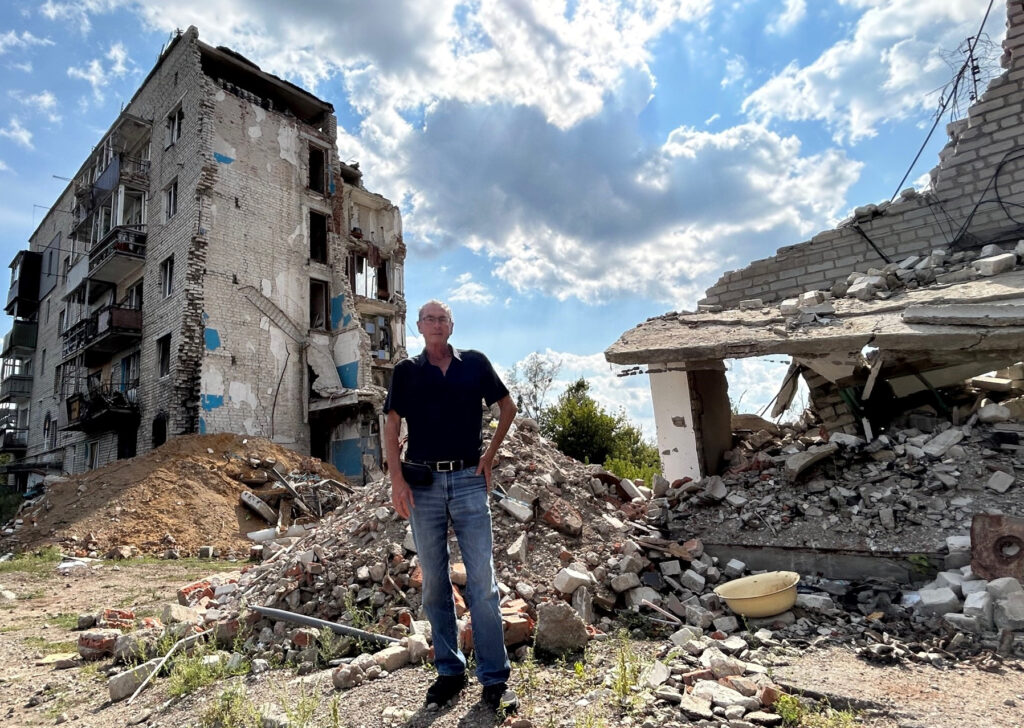
Lord Ashcroft at the remains of an apartment block in Izium, eastern Ukraine, where some 50 people were killed, many buried alive in their basement bunker.
“I see myself being here for a decade to help with the reconstruction after the war ends – to start with building schools, hospitals and community centres,” said Illingworth, aged 30, who is now head of operations and in charge of a team of 15 British and Ukrainian workers. Every day the team risk their lives going to frontline areas to deliver much-needed supplies.
Despite never having visited Ukraine before the war, Illingworth has been won over by the courage and resilience of its people. “Our biggest concern is that international support for Ukraine wanes over time,” he told me.
“I love this country and am inspired by its people. The only possible solution to this war has to be a complete victory for Ukraine otherwise Russia may go away, regroup and have another crack at invading in ten years’ time.”
Read this article on:
ConservativeHome.com
